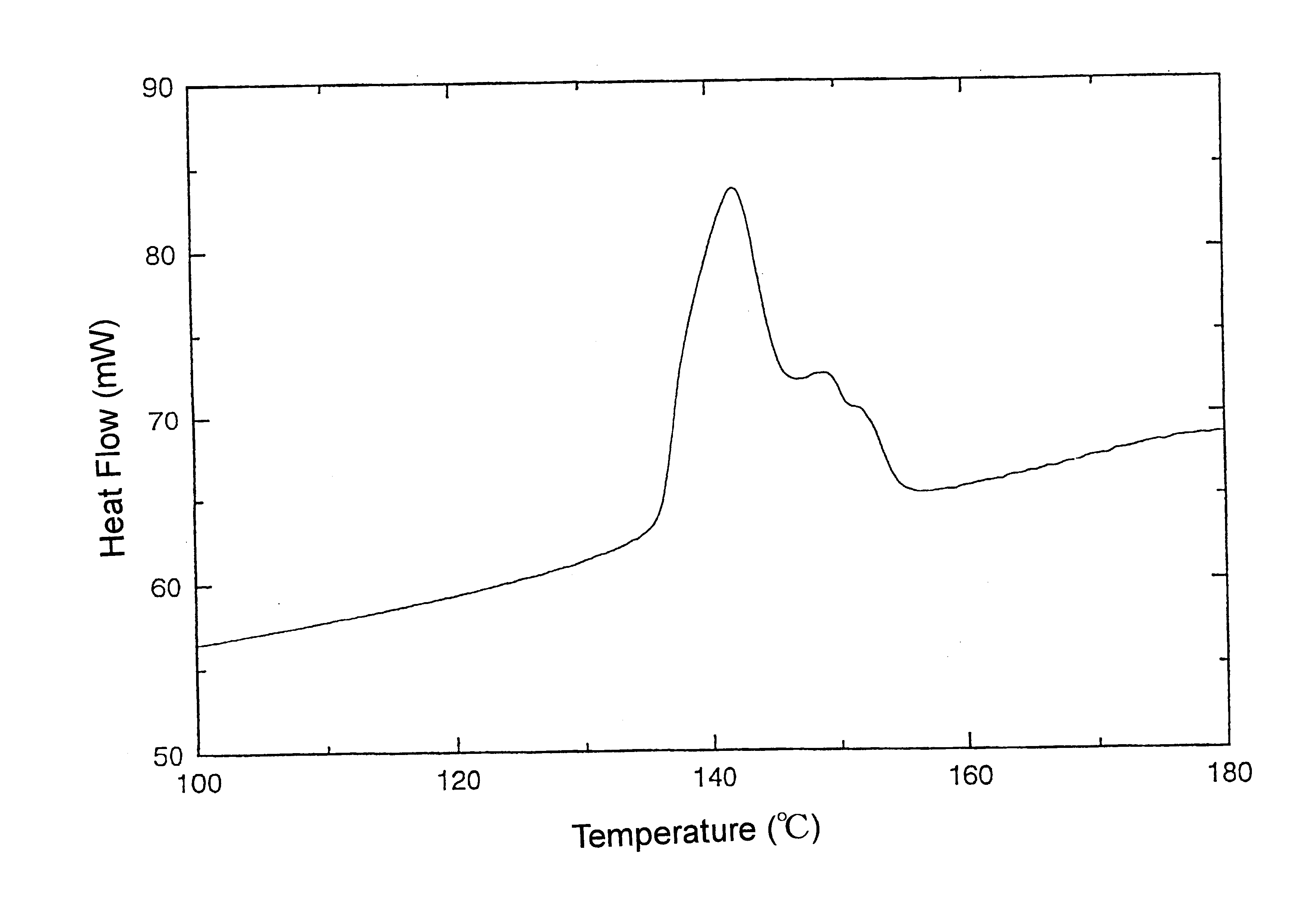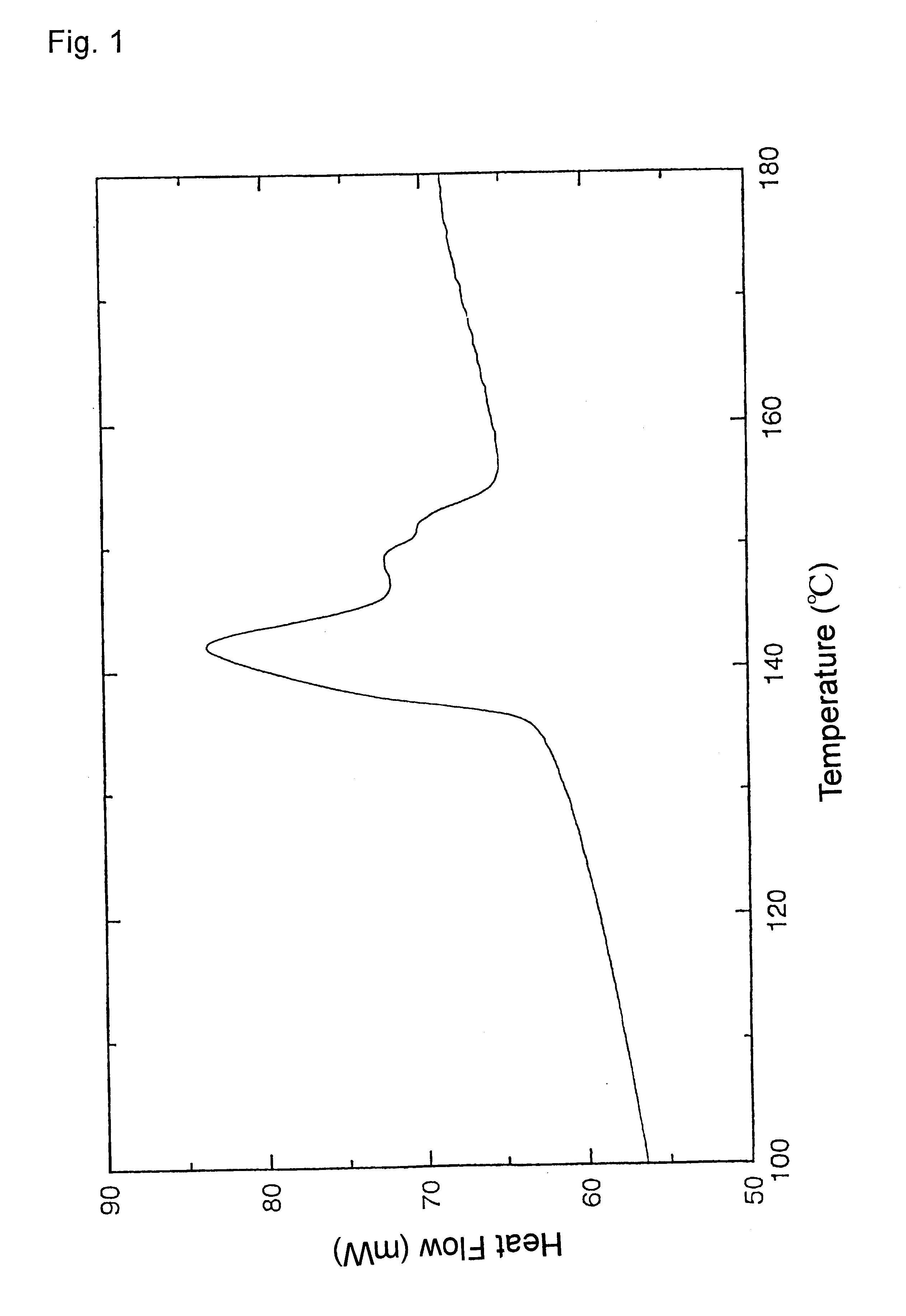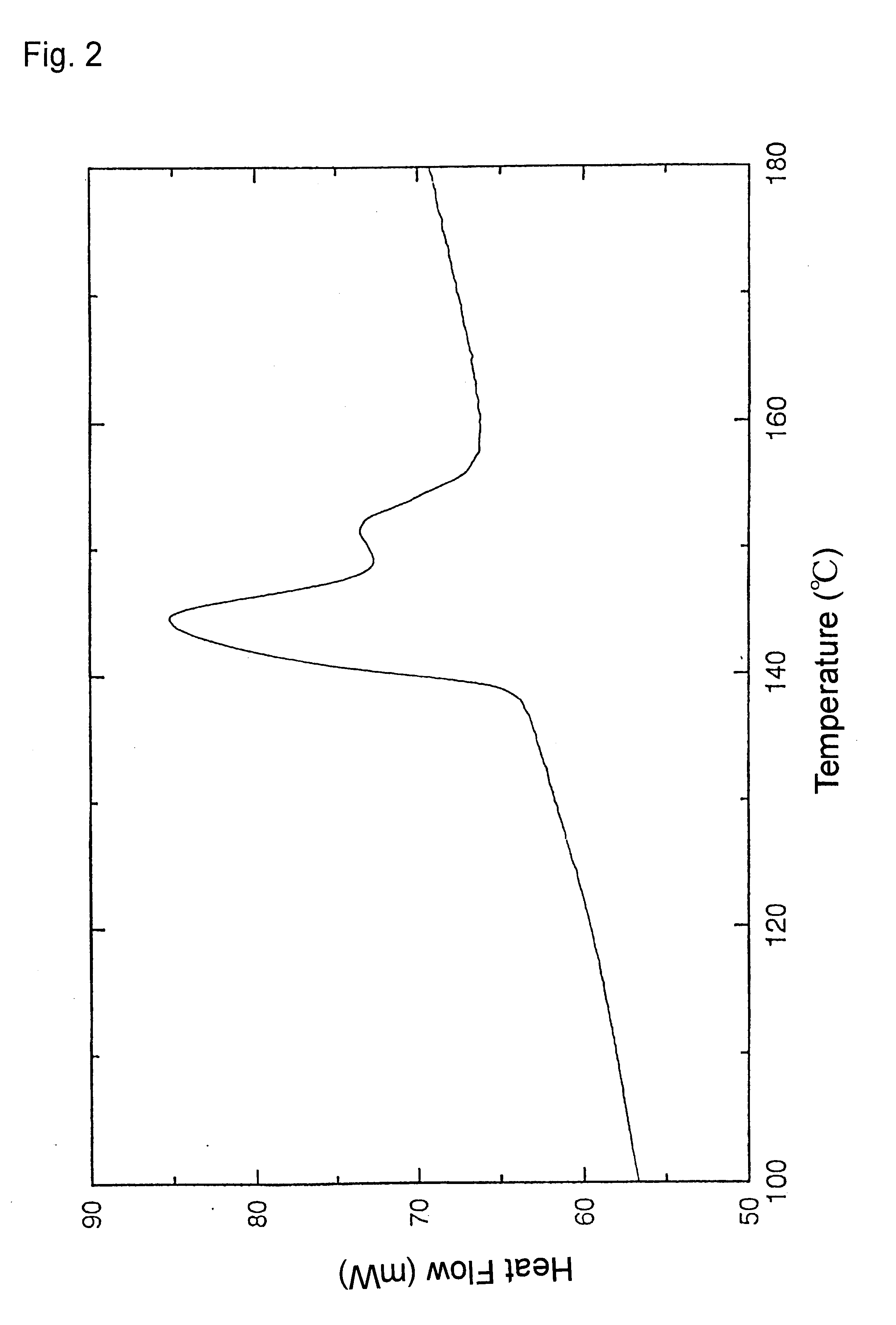High strength polyethylene fibers and their applications
a polyethylene fiber and high-tensile technology, applied in the field of high-tensile polyethylene fibers and their applications, can solve the problems of lowering strength and young's modulus, being employed, and difficult to improve the durability of these fibers, so as to improve the feeling of fit, improve the fashionability, and the effect of difficult to attract attention to the dirty parts
- Summary
- Abstract
- Description
- Claims
- Application Information
AI Technical Summary
Benefits of technology
Problems solved by technology
Method used
Image
Examples
example 1
A slurry mixture of 10 wt % ultrahigh molecular weight polyethylene having an intrinsic viscosity number of 21.0 and a molecular weight distribution index (Mw / Mn) of 3.7 and 90 wt % decalin was fed to a screw-type kneader at 230.degree. C., and their dissolution was achieved to give a spinning solution, followed by spinning at a rate of discharge through each nozzle of 1.4 g / min. using a spinneret (the diameter of each nozzle, 0.7 mm; the number of nozzles, 400) at 170.degree. C. The discharged filaments were blown with a nitrogen gas at 100.degree. C. as uniformly as possible at an average flow rate of 1.2 m / sec. through a slit-shaped orifice for gas feed, which orifice was disposed just below the spinneret, so that the decalin in the fiber surface was positively evaporated. Immediately after that, the filaments were substantially cooled with an air flow at 30.degree. C., and wound at a rate of 75 m / min. by Nelson-type rollers disposed downstream the spinneret. At that time, the so...
example 2
A polyethylene fiber was prepared in the same manner as described in Example 1, except that the discharged filaments were blown with a nitrogen gas at 120.degree. C. at an average flow rate of 1.4 m / sec. The physical properties and performance evaluation of the fiber are shown in Table 1. The temperature-increasing DSC curve before base line correction, which was obtained by differential scanning calorimetry (DSC), is shown in FIG. 2.
example 3
A polyethylene fiber was prepared in the same manner as described in Example 1, except that a high molecular weight polyethylene having an intrinsic viscosity number of 12.1 and a molecular weight distribution index (Mw / Mn) of 5.4 was used; the concentration of a spinning solution was set at 30 wt %; and drawing was carried out at a ratio of 3 for the first stage and 2.2 for the second stage. The physical properties and performance evaluation of the fiber are shown in Table 1. The temperature-increasing DSC curve before base line correction, which was obtained by differential scanning calorimetry (DSC), is shown in FIG. 3.
PUM
| Property | Measurement | Unit |
|---|---|---|
| temperature | aaaaa | aaaaa |
| temperature | aaaaa | aaaaa |
| diameter | aaaaa | aaaaa |
Abstract
Description
Claims
Application Information
 Login to View More
Login to View More - R&D
- Intellectual Property
- Life Sciences
- Materials
- Tech Scout
- Unparalleled Data Quality
- Higher Quality Content
- 60% Fewer Hallucinations
Browse by: Latest US Patents, China's latest patents, Technical Efficacy Thesaurus, Application Domain, Technology Topic, Popular Technical Reports.
© 2025 PatSnap. All rights reserved.Legal|Privacy policy|Modern Slavery Act Transparency Statement|Sitemap|About US| Contact US: help@patsnap.com



